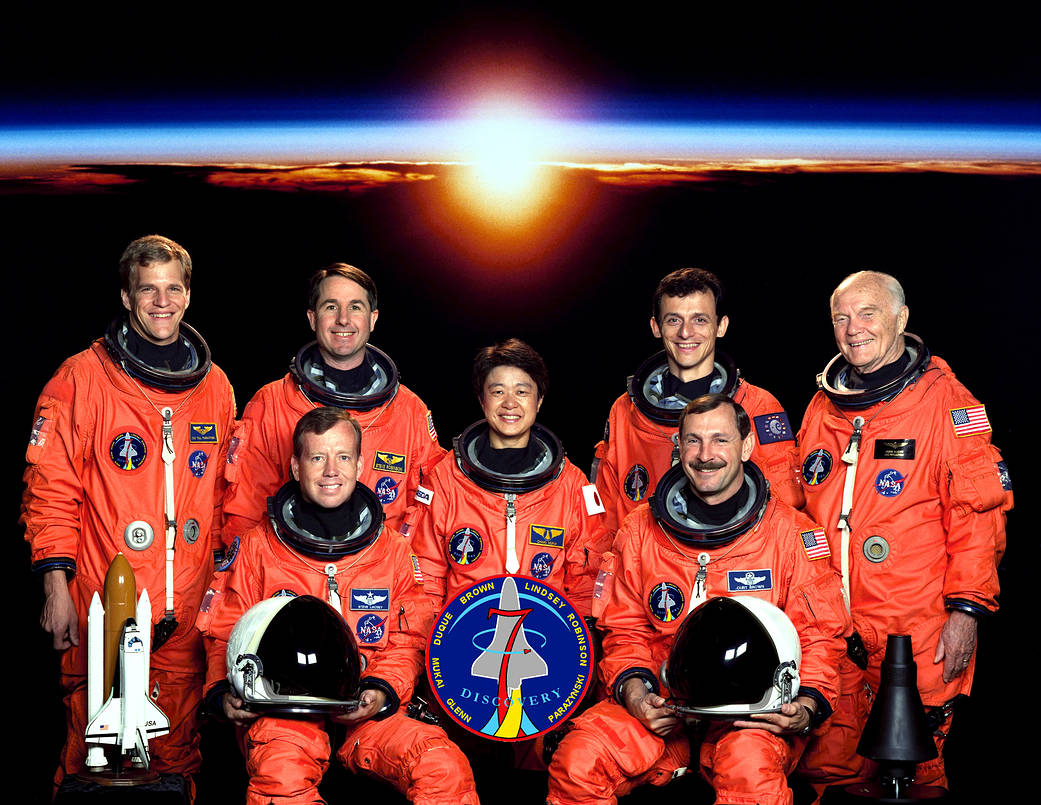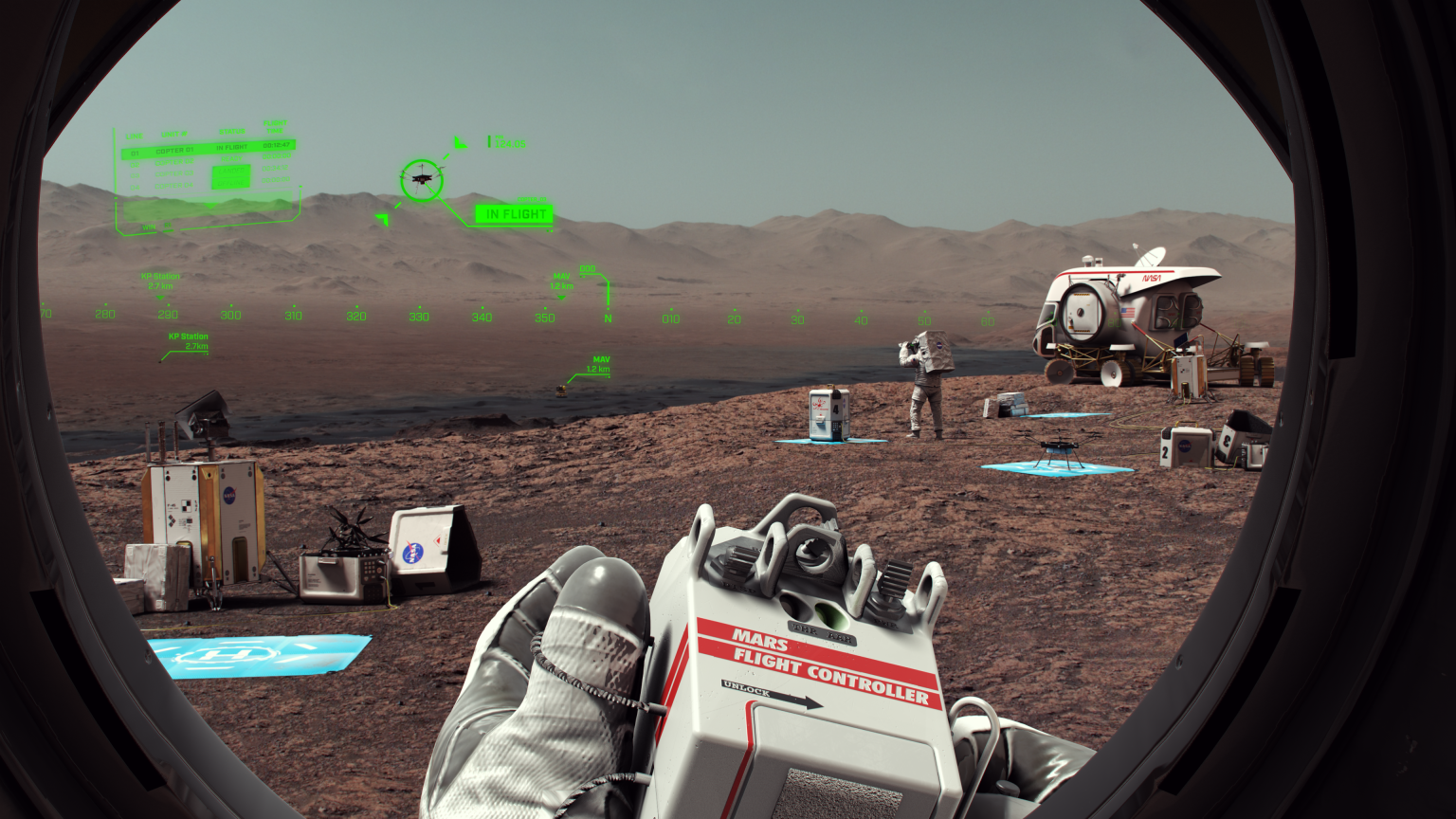
STS-95
STS-95 carried John H. Glenn back into orbit in his return to space. At 77 years old, Glenn at the time became the oldest person to go to space.
Orbiter
mission duration
Launch
Landing

Mission Facts
Mission: John Glenn’s Flight; SPACEHAB
Space Shuttle: Discovery
Launch Pad: 39B
Launched: October 29, 1998, 2:19:34 p.m. EST
Landing Site: Kennedy Space Center, Florida
Landing: November 7, 1998, 12:04:00 p.m. EST
Runway: 33
Rollout Distance: 9,508 feet
Rollout Time: 59 seconds
Revolution: 134
Mission Duration: 9 days, 19 hours, 54 minutes, 2 seconds
Orbit Altitude: 310 nautical miles
Orbit Inclination: 28.45 degrees
Miles Traveled: 3.6 million
Crew
Curtis L. Brown, Commander
Steven W. Lindsey, Pilot
Scott E. Parazynski, Mission Specialist
Stephen K. Robinson, Mission Specialist
Pedro Duque, Mission Specialist
Chiaki Mukai, Payload Specialist
John H. Glenn, Payload Specialist
Launch Highlights
At 12:30 p.m., the hatch was closed with crew inside the space shuttle Discovery, just as President Bill Clinton’s Air Force One plane touched down at the Cape Canaveral Air Station skid strip. The countdown proceeded to T-9 minutes, but was held an additional 8.5 minutes while the launch team discussed the status of a master alarm heard during cabin leak checks after hatch closure. Once the count picked up and the Orbiter Access Arm was retracted, the Range Safety Officer (RSO) requested a hold at T-5 minutes due to aircraft in the restricted air space around KSC. Once the aircraft cleared the area, the RSO gave the all clear signal and the countdown proceeded. Following main engine start, but prior to booster ignition, the drag chute compartment door fell off, but posed no problem for the mission. Managers decided not to deploy the chute upon landing.
Mission Highlights
The primary objectives of STS-95 included conducting a variety of science experiments in the pressurized SPACEHAB module, the deployment and retrieval of the Spartan free-flyer payload, and operations with the Hubble Space Telescope Orbiting Systems Test (HOST) and the International Extreme Ultraviolet Hitchhiker payloads being carried in the payload bay. The scientific research mission also returned space pioneer John Glenn to orbit – 36 years, eight months and nine days after he became the first American to orbit the Earth.
A slate of more than 80 experiments filled the nearly nine days in space. In addition to a variety of medical and material research, the crew released the Petite Amateur Naval Satellite, or PANSAT, to test innovative technologies to capture and transmit radio signals that normally would be lost because the original signals were too weak or contained too much interference. The crew also released the Spartan free-flying satellite to study the sun and the solar wind in a research effort to help scientists better understand a phenomenon that sometimes can cause widespread disruptions of communications and power supplies on Earth.
Medical research during the mission included a battery of tests on Payload Specialist Glenn and Mission Specialist Pedro Duque to further research how the absence of gravity affects balance and perception, immune system response, bone and muscle density, metabolism and blood flow, and sleep.
The Hubble Space Telescope Orbital Systems Test provided an on-orbit test bed for hardware that will be used during the third Hubble servicing mission.
Oct. 29, 1998 – John Glenn Returns to Space
On October 29, 1998, the first American to orbit the Earth made history again. John Glenn became the oldest man…
Read the Story
STS-95
Shuttle News
Retired Space Shuttle Locations
Shuttle Atlantis – Kennedy Space Center Visitor Complex Shuttle Discovery – Steven F. Udvar-Hazy Center Shuttle Endeavour – California Science…
Read the Story
















































